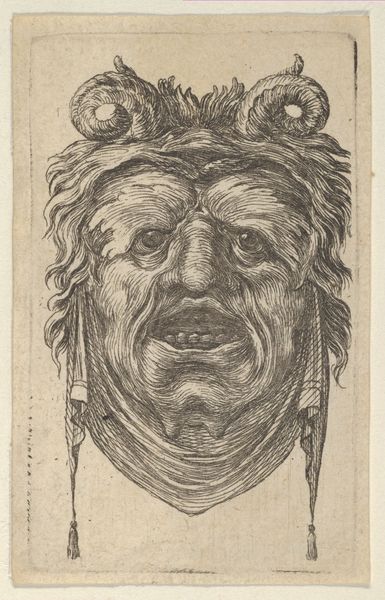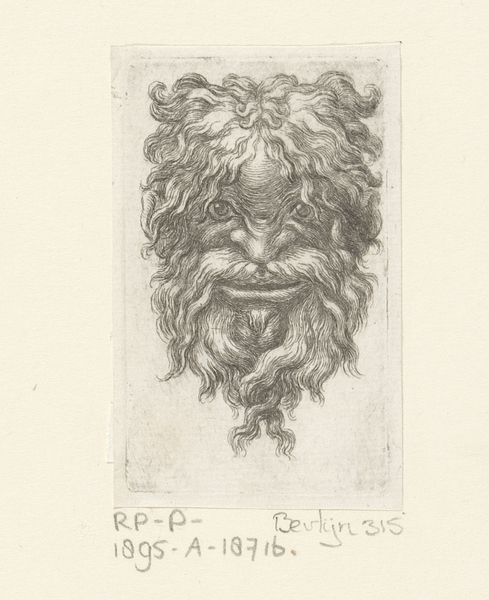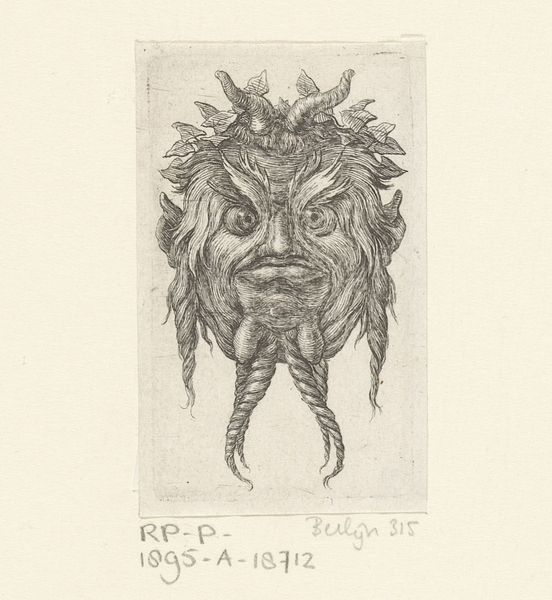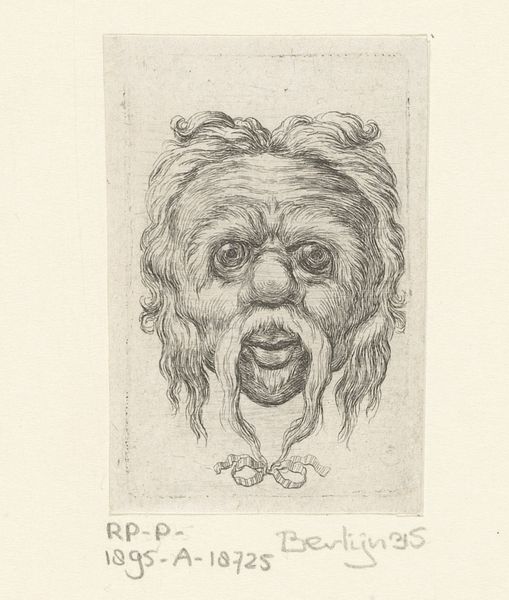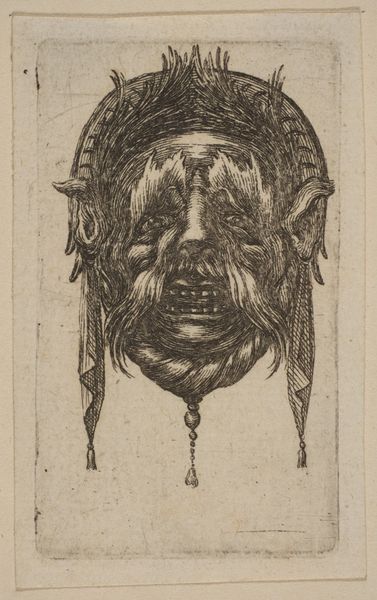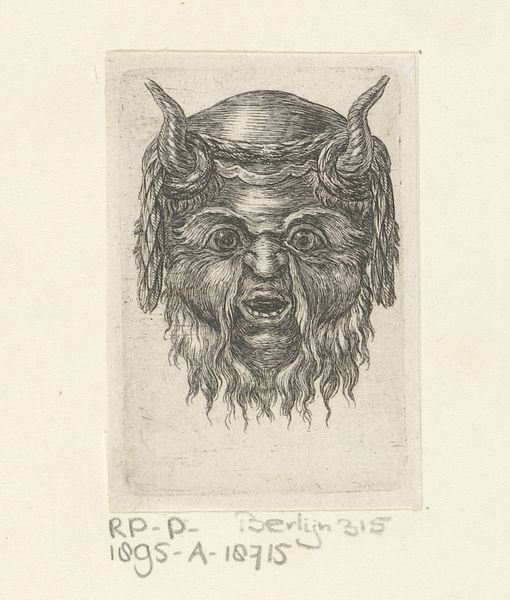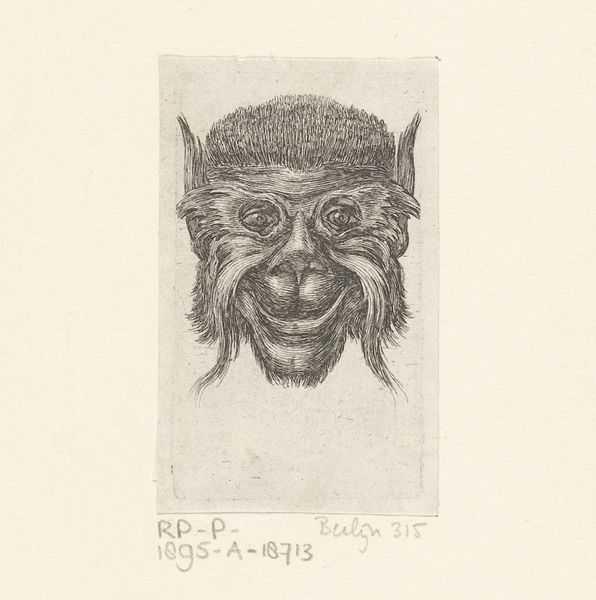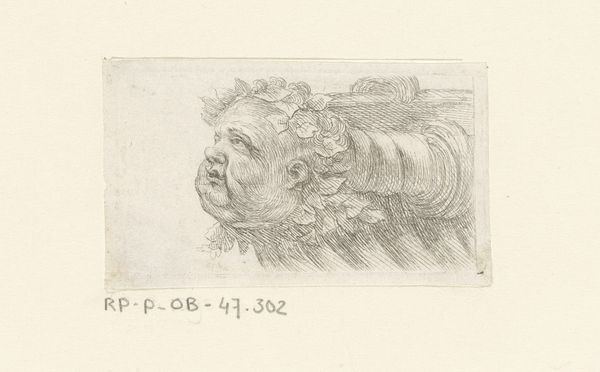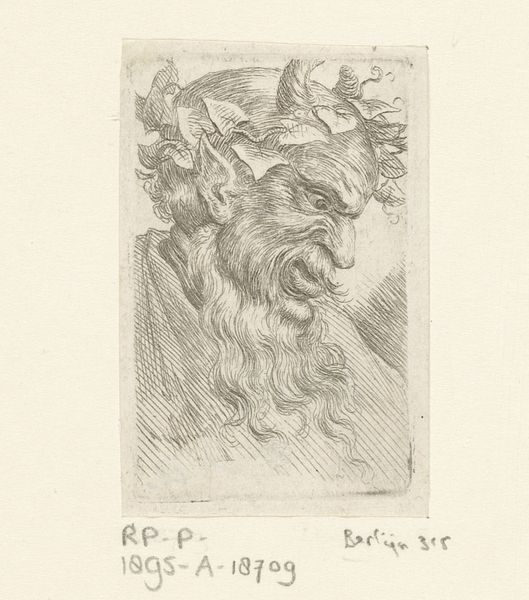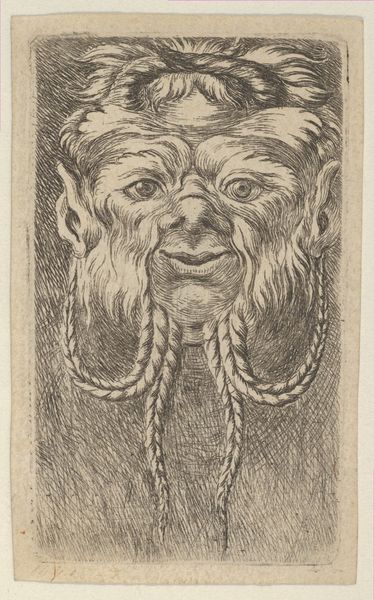
print, engraving
#
portrait
#
baroque
# print
#
old engraving style
#
pen-ink sketch
#
sketchbook drawing
#
grotesque
#
engraving
Dimensions: height 63 mm, width 38 mm
Copyright: Rijks Museum: Open Domain
Editor: Here we have François Chauveau’s "Masker met ramshoorns," an engraving that was created sometime between 1626 and 1676. The detail is amazing, especially given its small scale and the engraving medium. It’s a bit unsettling, actually. What social or political narratives might this grotesque mask be pointing towards? Curator: The power of the grotesque often lies in its disruption of accepted norms, wouldn’t you agree? Masks, historically, are potent symbols, often deployed in carnivals or satirical plays to momentarily invert hierarchies. Given Chauveau’s time, and this mask's particularly unsettling features—the ram's horns, the open mouth—it might critique authority, perhaps religious or aristocratic, during a period of intense social stratification and religious conflict. What reaction do you have to the gendering of this grotesque depiction? Editor: Well, it’s hard to say definitively, but it appears to be a masculine figure based on the facial hair and deeply lined features. If so, does that change our interpretation? Curator: Absolutely. Exposing the fallibility or the grotesque nature of masculinity, particularly within the elite, could be a subversive act. Consider the prevailing societal pressures on men to maintain stoicism and power. By presenting a grotesque, almost comical, image of masculinity, Chauveau might be dismantling these expectations. Who gets to laugh at such a face, and under what conditions? Editor: So it's not just a funny or scary face; it's actively challenging those in power. I see the piece so differently now, thinking about the act of resistance embedded in the artist’s choices of grotesque imagery and satirical display. Curator: Exactly! And this kind of image reminds us of art's potential to challenge prevailing ideologies and encourage critical examination. We see the value of interrogating beyond aesthetics, exploring sociopolitical implications and identity politics imbedded within the art!
Comments
No comments
Be the first to comment and join the conversation on the ultimate creative platform.

